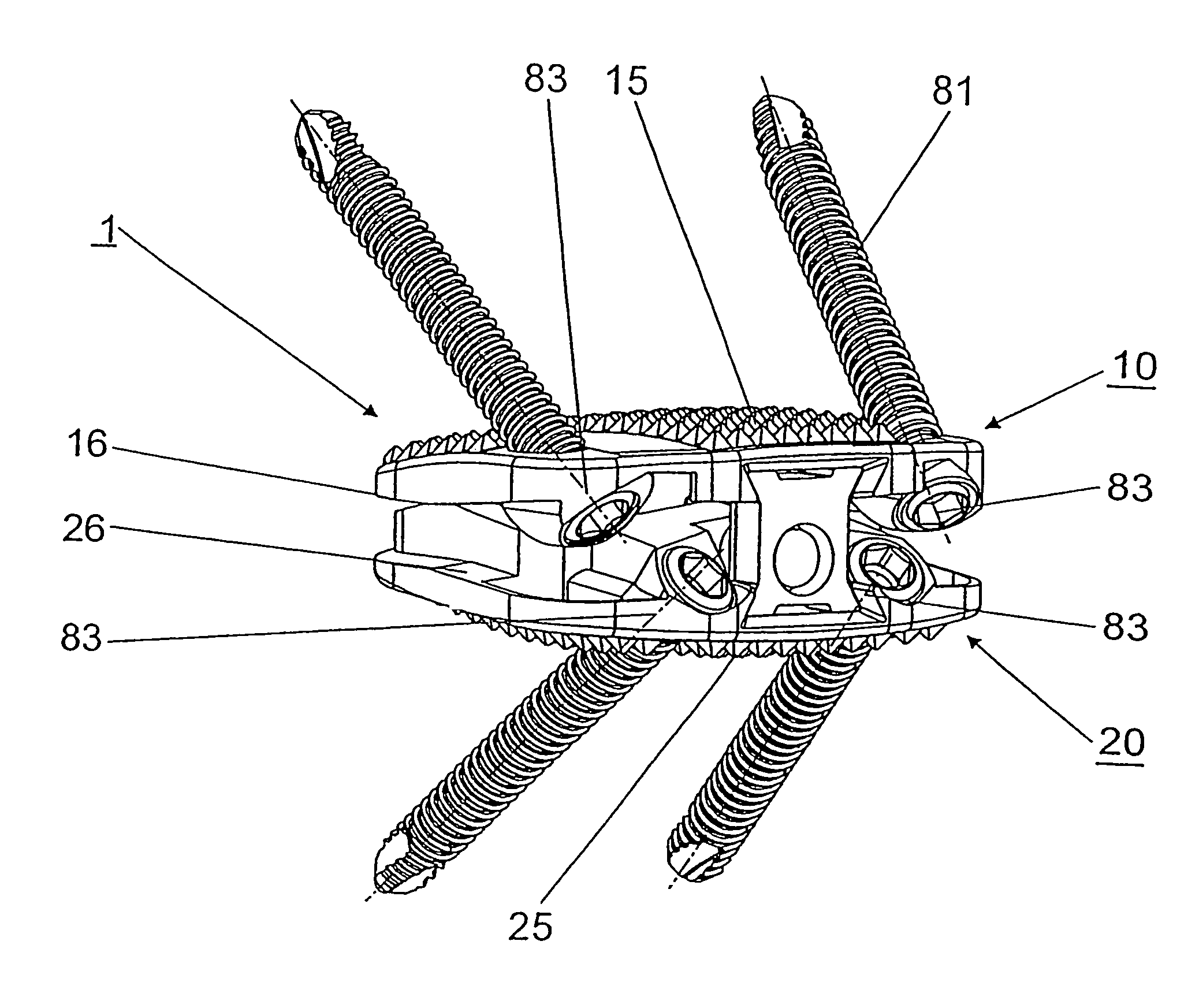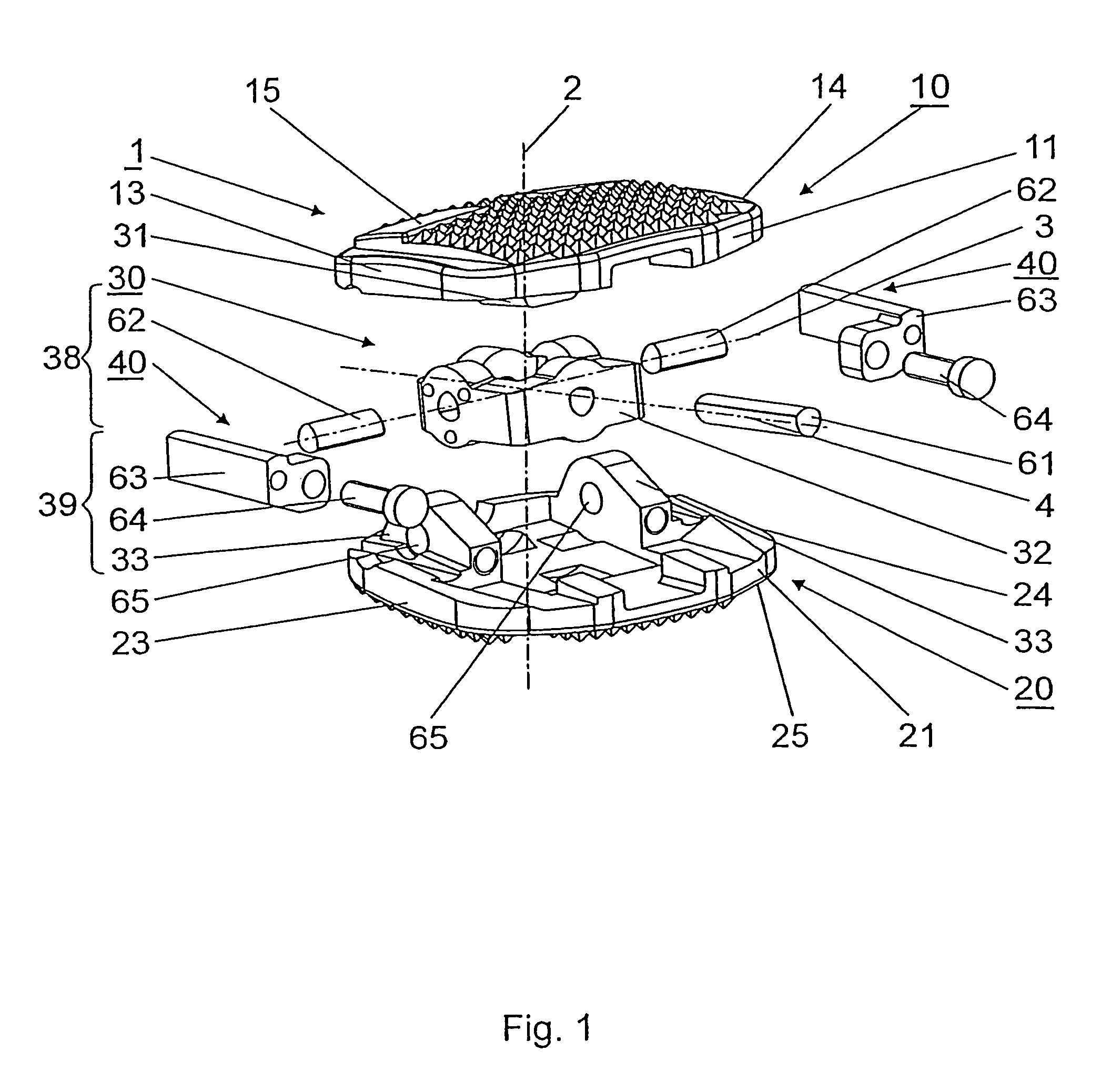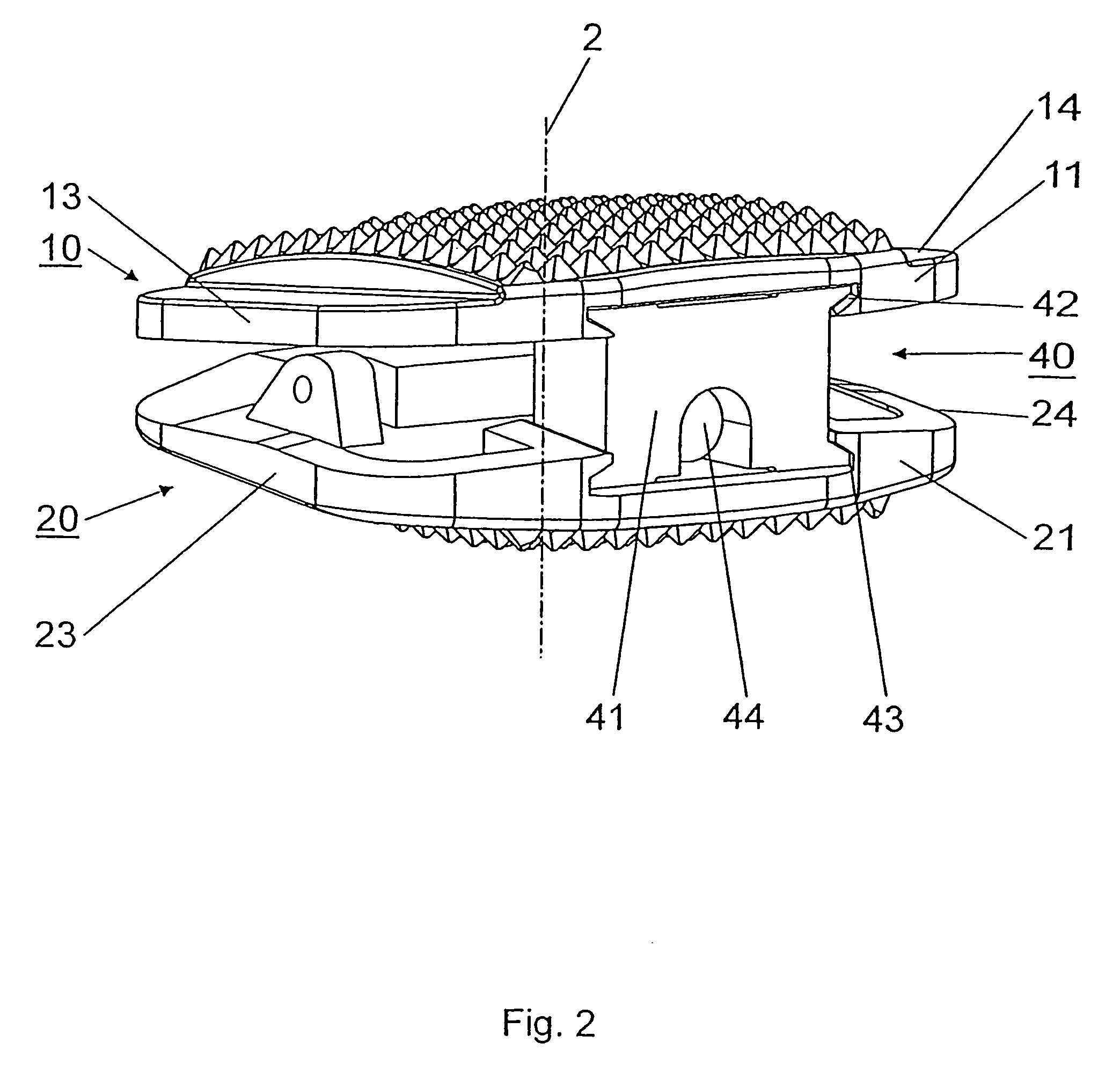Intervertebral implant comprising joint parts that are mounted to form a universal joint
- Summary
- Abstract
- Description
- Claims
- Application Information
AI Technical Summary
Benefits of technology
Problems solved by technology
Method used
Image
Examples
Embodiment Construction
[0029]An embodiment of the intervertebral implant according to the invention 1 is illustrated in FIG. 1 and comprises an upper section 10 with an upper apposition surface 15 arranged perpendicular to the central axle 2 for laying onto the base plate of a neighbouring vertebral body, a lower section 20 with a lower apposition surface 25 arranged perpendicular to the central axle 2 for laying onto the cover plate of the neighbouring vertebral body and a joint 30. The upper section 10 and the lower section 20 are linked in a way that allows movement in relation to each other by means of the joint 30, wherein the mobility of the upper section 10 relative to the lower section 20 around a first swivel axle 3 arranged perpendicular to the central axle 2 is limited within an angle range of between +10° and −6° and around a second swivel axle 4 arranged perpendicular to the central axle 2 and vertical to the first swivel axle 3 is limited within an angle range of ±7°.
[0030]The joint 30 is ar...
PUM
 Login to View More
Login to View More Abstract
Description
Claims
Application Information
 Login to View More
Login to View More - R&D
- Intellectual Property
- Life Sciences
- Materials
- Tech Scout
- Unparalleled Data Quality
- Higher Quality Content
- 60% Fewer Hallucinations
Browse by: Latest US Patents, China's latest patents, Technical Efficacy Thesaurus, Application Domain, Technology Topic, Popular Technical Reports.
© 2025 PatSnap. All rights reserved.Legal|Privacy policy|Modern Slavery Act Transparency Statement|Sitemap|About US| Contact US: help@patsnap.com



